Potato pests cause enormous damage to crop plantings every year. Summer residents, farm owners lose kilograms and tons of vegetables, although they spend a lot of money to protect the culture. To achieve the result, you need to know the description of potato pests, treatment, ways to combat them, and preventive measures.
Content
Colorado beetle
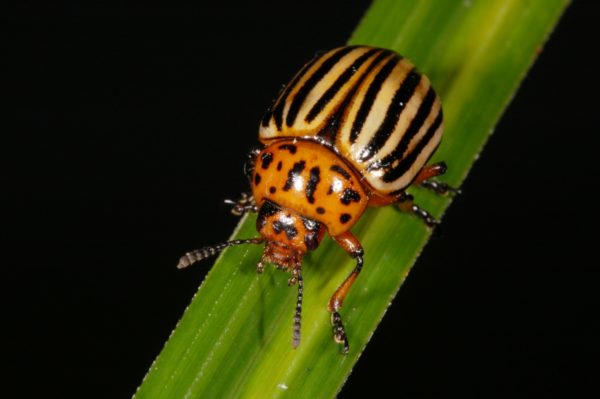
The Colorado potato beetle occupies the first place in the list of “enemies” of potatoes. The striped orange-black insect is familiar to many summer residents with its gluttony. Having settled on potatoes, the beetle and its larvae feed on leaves and shoots of culture, leaving behind gnawed stems.
The sizes of adults (adults) do not exceed 12 mm, the larvae reach 10-15 mm. Caterpillars of an orange color with a black head and two rows of black dots on the sides appear from egg clutches in early summer. In its development, four stages (ages) pass, then go into the soil and pupate.
Females lay from 300 to 750 eggs per season; the number depends on weather conditions and climate conditions. In search of food, adult larvae crawl through plants, gradually capturing new areas of potato planting and eating healthy bushes. Thanks to wings, beetles fly over considerable distances in search of food.
The most active pests during the budding period of culture, flowering. If you do not fight, then insect colonies can completely destroy the planting of potatoes. It is difficult to fight a beetle, since insects are resistant to chemicals and can go on diapause for 2-3 years (hibernation), experiencing hungry periods. Insects feel the danger and at critical moments fall to the ground, pretending to be dead.
Colorado beetles are not interested in birds, with the exception of turkeys, guinea fowl, as a significant amount of dangerous toxins (solanine) accumulate in the cells of the pest body. From natural enemies to the larvae are ground beetles, ladybugs.
Nematodes
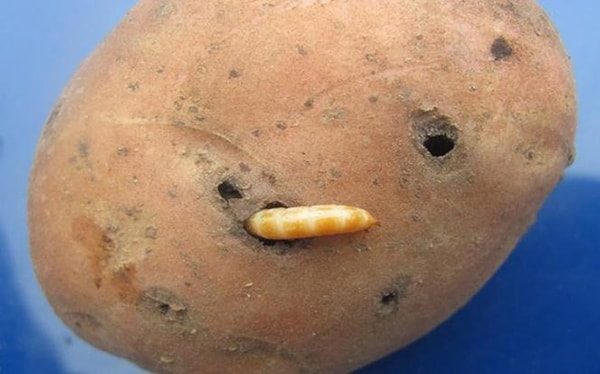
The worst pests of potatoes (see photo) include microscopic golden nematode. Worms, about 1 mm long, live in the soil for about 8-10 years. They hibernate in the form of eggs and larvae in cysts; when heat enters, they penetrate the root system of plants. Eating tissues and plant juices, they grow to adults, which after fertilization, lay eggs inside themselves, and then die. There are several varieties of nematodes:
- gall - damages the roots of culture, potatoes in the ground;
- stem - affects the ground part of plants, appears on tubers during storage;
- soil - parasitizes on the roots of potatoes.
When the nematode is affected, the bushes stop growing, turn yellow. In the flowering phase, buds are small or absent; tubers do not form. There is a pest in violation of agricultural technology, the absence of crop rotation on the site, when planting infected seed material
Wireworm and false wireworm
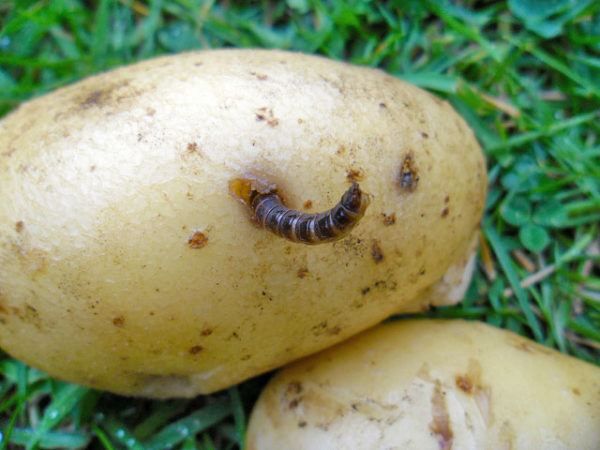
The damage caused by the wireworm is comparable to the damage from the Colorado potato beetle. Wireworms are the larvae of the nutcracker beetle, which are omnivorous and damage all garden crops, cereals. Imagoes are not dangerous.
Larvae are caterpillars up to 2-3 cm long, with a hard chitinous cover of brown-yellow, brown color. They live in the soil for 3-4 years, damage the roots, stolons, lower part of plants. In tubers, larvae gnaw out labyrinths, causing potato rot and spoilage. Pests carry viruses of dangerous diseases, potatoes are unsuitable for storage and food.
False Straw - the larva of the darkling beetle, looks very similar to real wireworms. The differences are in the life cycle, as these pests live for about a year. Adult plants, as well as worm larvae eating seed germ, seedling roots and stems near the root neck, harm plants.
Aphid
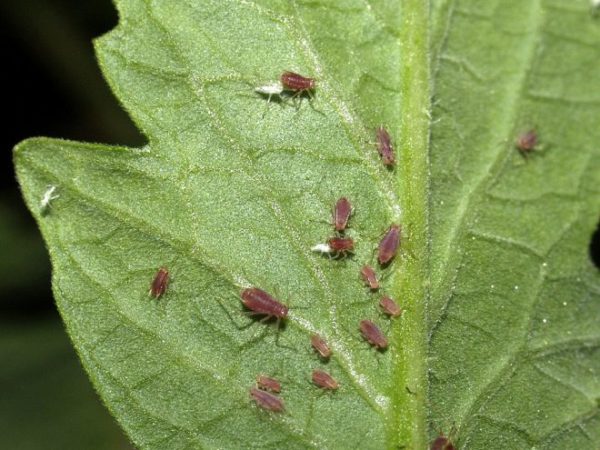
In all regions, there is a malicious pest of potatoes - aphids. In nature, there are hundreds of species of this insect that differ in biological parameters. Potato aphid is a small insect, about 2-3 mm in size, greenish in color with a dark head. There are individuals with and without wings, each group has its own functional (reproduction or movement).
Insects feed on plant sap, live in colonies on the underside of leaf blades. When a potato is damaged, the upper tier of leaves begins to curl, dry out. Bushes fade, which reduces crop yields. Aphids secrete honey dew, which ants feed on, flies fly together. Sooty fungi form on the sheets quickly.
This species of aphid is a polyphage that feeds on the juice of a wide variety of crops. With a massive invasion of aphids, the threat hangs not only over potato beds, but also planting tomatoes, eggplant, cabbage, cucumbers, zucchini, roses. The danger of the pest lies in the fact that aphids spread a large number of different viruses, infecting healthy plantings of potatoes.
Cicadas
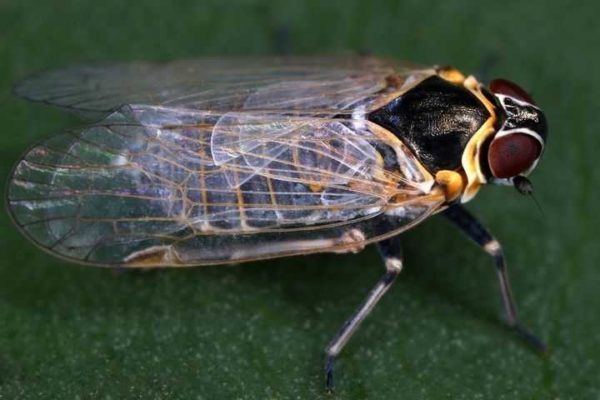
Most of the cicadas lives in the southern regions of the country. Insects look like aphids, but have well-developed hind limbs. Thanks to the legs, tiny cicadas jump, and the wings allow them to fly all over the site. They switch to potatoes from weeds (bindweed, sow thistle), feed on the juice of the leaves of the culture.
In the south, potatoes are affected by the following types of cicadas:
- white
- green
- bindweed.
The main danger lies in the transfer of various diseases by the cicadas, including the insidious mycoplasma infection - potato columnar.
Potato shpanka

Usually this pest lived in the southern regions of the country, but due to climate warming it was increasingly seen in the middle lane and in the southern regions of the European North. The oblong-shaped bugs reach a length of 1.5-2 cm, fly over the site, damaging the foliage of various crops. On a potato bush, usually 10-15 bugs are collected, completely eating up the aerial part of the plant. For 2-3 days, only the stems remain from the bush.
The period of activity of the crochet is in the middle of summer, when heat is in most of the country. Larvae do not bring harm, the danger is adults who devour potato tops. Manual collection of the pest is not practiced, since the body contains a caustic toxic substance - cantharidin. In contact with the skin causes redness, abscesses, sores. If the poison enters through the wounds and injuries in the blood, it causes poisoning.
Potato garden moth
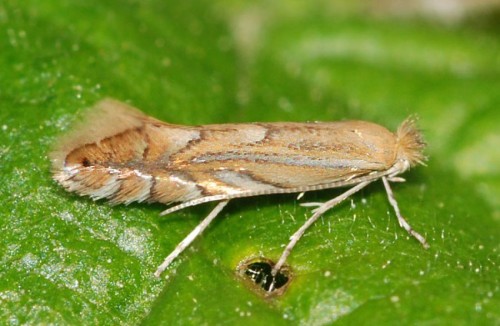
A small gray-brown butterfly lays eggs in the soil, on the back of the leaves, in the vaults, from which then voracious larvae appear. It is they that pose a danger to potato tubers, and on plantings - to leaves and shoots of culture.
The larva is yellow or off-white in color, about 1-1.5 cm long., Eats potatoes in the ground. Gnawing into tubers, leaves numerous convoluted passages, as well as excrement. Potato moth can be detected by a number of signs:
- united leaves of tops;
- sagging tops of bushes;
- dry or wet rot;
- moves in potato tubers.
Spider mite
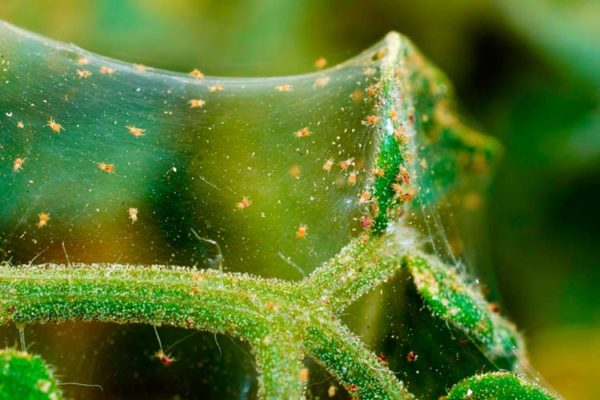
Very tenacious insect, reaching a size of about 0.6-0.8 mm. It feeds on plant juice, lives on the underside of leaves. Under normal conditions, it gives one generation per season, but in shelters where seed potatoes are grown, up to 4-5 generations of the pest come out.
Damaged by the mite leaves are covered with yellow or brown dots, the tops fade and dry. A characteristic sign of the presence of a tick on potatoes is a silvery small cobweb surrounding the lower side of the leaves, flowers.
Potato scoop
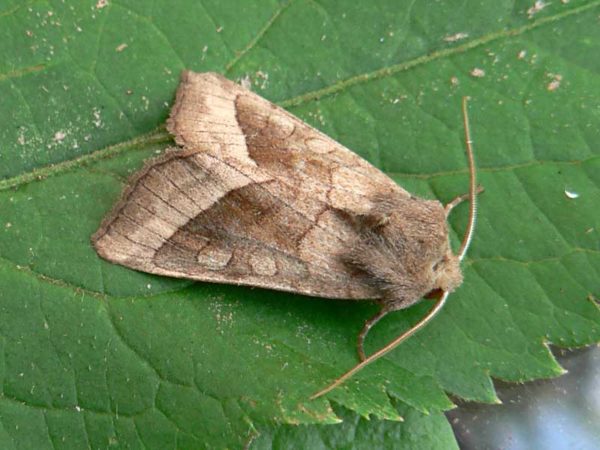
A plain gray butterfly can destroy potato plantings over a large area. Female pests lay up to 60-70 eggs, of which caterpillars appear at the end of spring. Potato scoop - an insect from the group of polyphages, in addition to potatoes, damages the planting of carrots, onions.
Yellow or red-brown larvae reach a length of 5 cm, penetrate into the stem of the bushes in the tubers. Due to the fact that the roots are eaten up, the tops wither, the bush quickly dies. In potato tubers, the scoop makes moves, eating the tissues of the vegetable and leaving excrement in the cavities. After filling the cavity, the larva passes to another tuber. Damaged tubers rot, resulting in severe crop loss.
Potato flea
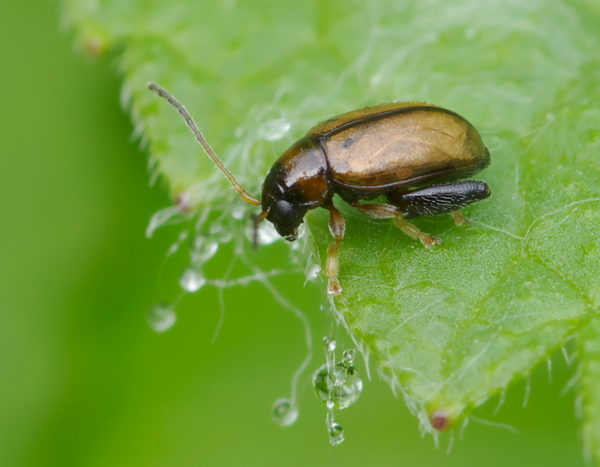
Tiny black bugs were first discovered in the United States, then they moved to other continents. In Russia, they are found everywhere, up to the Far East.
The sizes of adults are from 2 to 2.8 mm, the larvae are up to 12 mm. Caterpillars of a white color, appear from eggs in underground clutches, feed on potato roots. Adult beetles - leaf beetles, eat leaf plates on the bushes. After the invasion of fleas, potato leaves are covered with numerous holes and look like a sieve. Plants stop in growth, dry up, productivity decreases sharply. In addition, fleas carry viruses that infect weakened plantings.
Potato cow
The scientific name is epilyahna, outwardly similar to a ladybug, but the body is covered with whitish hairs and the number of black dots on the wings is much larger (28 spots).
A 4-5 mm bug makes egg laying on the lower surface of the foliage. In one litter - up to 20 specimens, while the total number of eggs per season can be about 300-500 pieces. Larvae yellowish-green with numerous black villi, eating leaf flesh. Caterpillars and adults leave only one vein of plates, completely eating soft tissues.
Plants dry up, wither, tuber formation ceases. Cow is a carrier of dangerous viruses, which increases the damage caused by insects to garden plantings. In addition to potatoes, it damages bushes of tomatoes, peppers, young shoots of cucumbers, pumpkins, and corn.
Slug
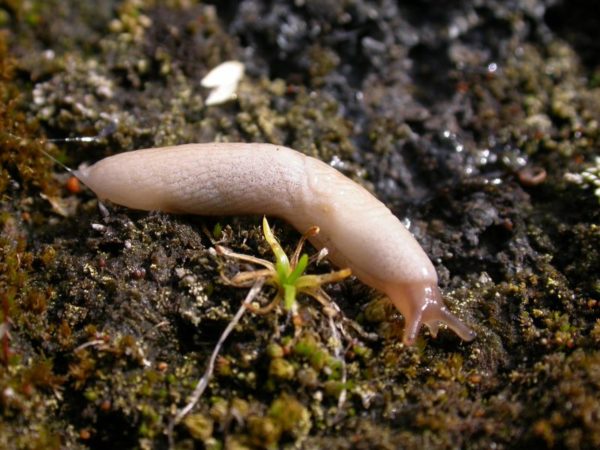
Do not underestimate the harm of this inconspicuous mollusk leading a nocturnal lifestyle. Gastropod mollusks parasitize on ridges with potatoes, carrots, beets, preferring moist areas.
Slugs gnaw through the tissue of leaf plates, leaving holes and silver marks on the surface, damage root crops and tubers. By doing so, they spoil the presentation of vegetables, reduce the quality and keeping quality of the crop. Mollusks carry parasitic helminths, spores of pathogens, infecting not only plants on the site, but also domestic animals.
Medvedka
A large, threatening-looking insect (up to 5-6 cm) with a dark brown body, strong legs and powerful jaws. The bear lives in the soil, making numerous moves, arranging egg laying. The harm is caused by imago and larvae of the bear:
- gnaw plant stems;
- root crops eat out;
- damage potato tubers.
You can find out that the bear settled on the site, both by damaged withered bushes and holes with heaps of earth on the surface of the soil (insect exits).
Chafer
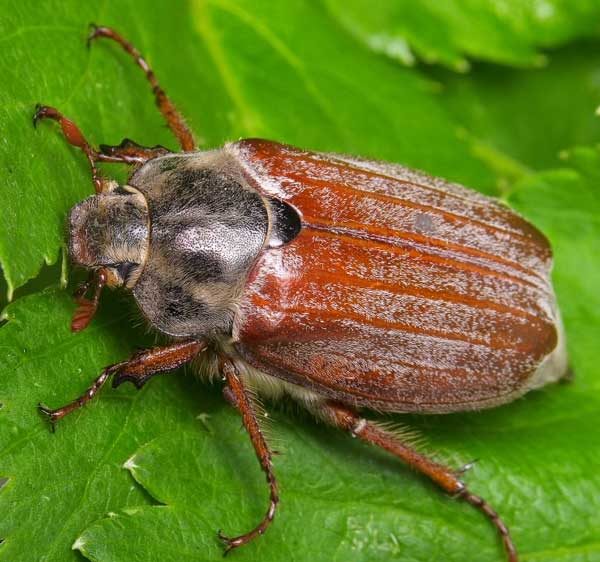
Beetles begin years in late April and May, laying eggs in the soil. After about 3-4 weeks, larvae appear that, at the age of the younger stages, are harmless to root crops. Starting from the second year, an insect chewing apparatus appears in the insect, and from that time on, larvae pass in search of food to potato tubers and root crops.
White caterpillars with red or orange dots on the sides live in the soil for about 4 years, then turning into beetles. The larvae are most harmful at the age of 3-4 years, when they need a large amount of food.
In search of food, they move underground for 80-100 meters, gnawing the flesh of tubers. In a month, one adult larva can damage up to 10-15 bushes of a crop. Potato tops turn yellow, dry out, wither, tubers rot, deteriorate.
Rodents
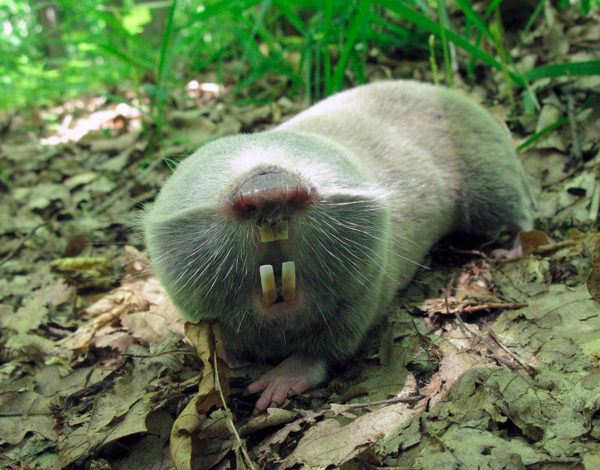
From gnawing animals, an earthen rat and mole rat damage potatoes. Rats belong to the group of mouse voles, most often live in gardens near ponds and streams. Length - up to 25 cm, the body is covered with brown-black hair. Animals eat tubers, gnaw through the roots of plants, equip entire stores underground where potato tubers and small root crops are hidden.
In favorable conditions, it multiplies very quickly, therefore, having noticed a small animal on a site (through holes in the ground, traces of plant damage), it is necessary to immediately take up extermination of the pest.
Mole rats are large, up to 30 cm long, rodents feeding on root crops and potato tubers. The animal does not have an eye, instead of them there are dense folds of skin. It lives underground, tearing complex passages with holes, arranging nests and pantries. Unlike moles, mole rats are a herbivorous rodent, digging burrows with strong teeth. Adult animals can eat as much feed per day as they weigh themselves (up to 1-1.2 kg). On the site, his activity is noticeable on earthen mounds and numerous tunnels, in which you can even stumble if you are reckless.
Pest Control Methods
If any pests are found on the site, it is necessary to begin the fight against them as soon as possible. Procrastination threatens crop losses, outbreaks of various infections in weakened plants.
Agrotechnical techniques and mechanical methods
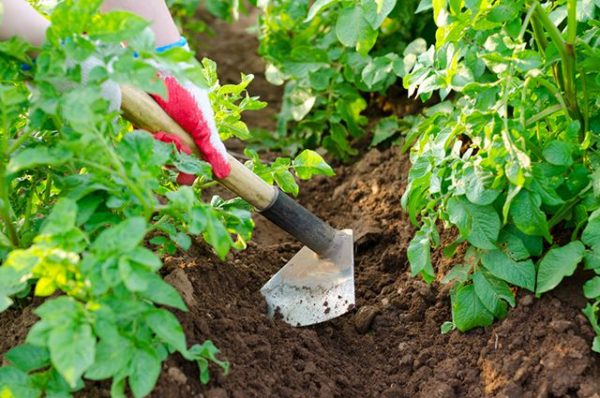
By following the rules of crop care, you can prevent the appearance of pests on the site. Among the main ways:
- obligatory digging of a site in the spring and in the fall;
- loosening and hilling of beds;
- weeding.
Such measures help to remove larvae, egg laying, imago to the surface, where it is easier to destroy the pest. After the autumn digging, pests on the surface will inevitably die from the winter cold.
In the fight against a number of insects, manual collection is effective. With small amounts of Colorado potato beetle or potato bun, they are collected from the bushes by hand, not forgetting about gloves and accuracy.
The use of chemicals
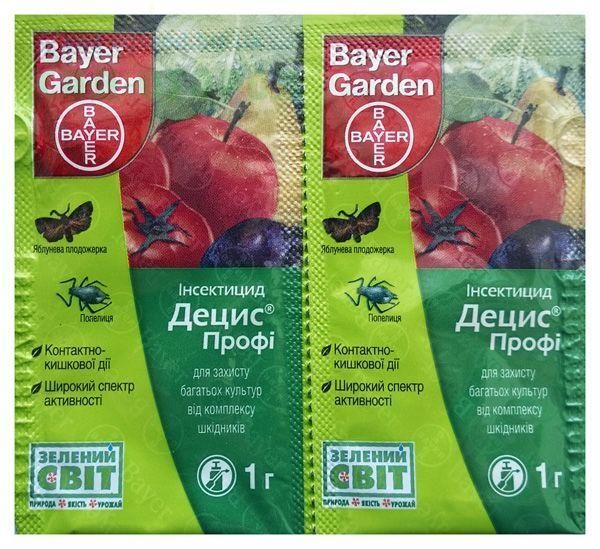
Modern insecticides are effective in protecting potatoes from many pests, and both universal and specialized preparations are available. “Minus” is toxicity, therefore it is recommended to use it only with a large number of insects, strictly following the instructions.
From the Colorado potato beetle:
- from the group of pyrethroids, Decis, Karate are suitable;
- from organophosphorus - Zolon;
- Novodor is used against larvae, at all stages of the development of the insect - Fitoverm, Bankol.
To exterminate potato cows and moths:
- Inta Vir;
- Spark;
- Ciperon.
To combat potato stem nematode, Vidat is used, but Tagor, Imidor, Confidor extra, Bi-58 are effective against aphids.
Granulated products are created against slugs on potatoes:
- Ferramol;
- Storm;
- Meta;
- Anti slug.
Granules are scattered in the aisles, but exclude access to the site of domestic animals.
Save the potatoes from the bear larvae of the beetle (chafer beetle), wireworm it is possible with the help of Bazudin, Medvetox, Antichrush. Specially against the larvae of the May beetle, the remedy Vallard (based on diazinon) was created. It is easiest to destroy the potato flea with solutions of Decis, Calypso, Spark, Sherpa, Actellik, Fufanon are used from the scoop.
For the treatment of tubers before planting, apply:
- Prestige;
- Taboo.
From biological products for the protection of potatoes, Lepidocide, Bitoxibacillin, Enterobacterin have been created and have proven themselves well. They can be used at any stage of cultural development.
Folk remedies
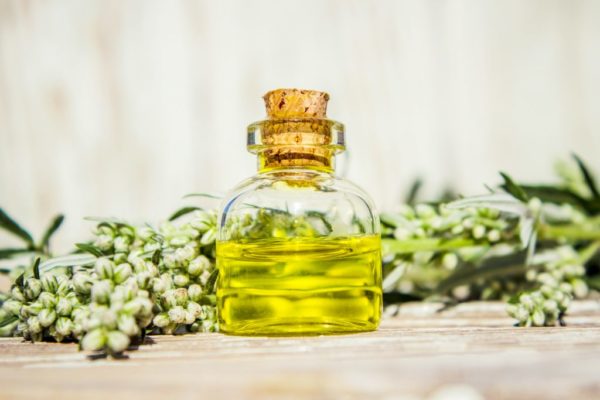
In the suburban areas to fight with potato pests preferable to formulations according to folk recipes that are safe for humans and the environment. These are various decoctions, infusions of herbs, mullein, ash, which are prepared immediately before use.
From the Colorado potato beetle (all proportions are given per 10 liters of water):
- wormwood infusion. 300 g of grass are poured with water, a glass of ash is added, they stand for a day;
- tobacco infusion. Suitable dry stems, roots, powder. The amount of raw materials - half a kilo, insist in water for two days;
- broth of horsetail and dandelion. Take 200 g of each type of herb, boil for 15 minutes. The concentrate is cooled, diluted with water (0.5 liters - 10 liters of water).
To destroy the bears and slugs, traps with beer are made, wireworms are lured into "traps" by cut potatoes. After 3-4 days, it remains only to remove the caught insects gathered in traps. You can get rid of potato moths, fleas by dusting planting with a mixture of wood ash, bitter pepper and tobacco dust.
Many insects do not tolerate harsh aromas, so it is recommended to plant such plants on potato ridges and along their perimeter:
- calendula
- fennel;
- coriander;
- lavender;
- peppermint.
Thrips will not appear on the ridges if the potatoes are sprayed with infusion of garlic cloves or arrows (200 g of raw material is taken per liter of water, insist 4-5 days). A decoction of tobacco, an infusion of marigolds, a solution of ammonia (2 tablespoons per bucket) that helped to get rid of aphids, scoops, and fleas showed themselves well on potatoes.
Preventative measures
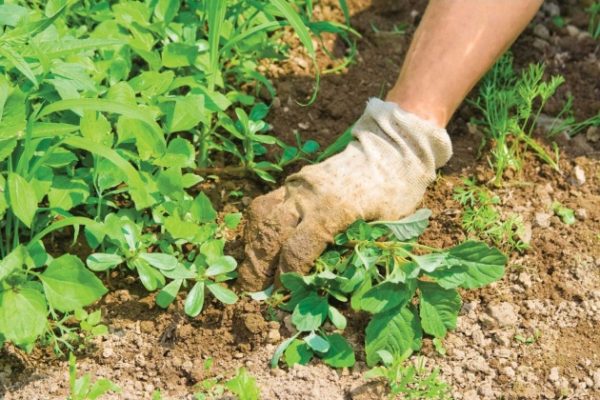
Pest control is time-consuming, it is much easier to prevent the appearance of dangerous insects in the garden. What preventive measures have an effect:
- pickling potatoes before planting (potassium permanganate, Prestige, Taboo);
- twice a year (spring, autumn) dig ridges;
- timely remove weeds, remove plant debris from the garden;
- use healthy quality seed material for planting;
- carry out the necessary techniques of agricultural technology: watering, top dressing, hilling of plantings;
- control the beds with plants, noticing the slightest changes in the growth and development of the crop in time;
- processing plantings with herbal compositions to prevent the appearance of insects;
- alternate crops on the site, observing crop rotation;
- cultivate the soil by sowing green manure;
- carry out disinfection of garden equipment;
- observe the distance between the holes when planting, taking into account the characteristics of the varieties;
- cultivate on the site modern, more tolerant to pests varieties;
- only high-quality potatoes are sorted and selected for storage, removing diseased deformed tubers.
Breeders have bred many varieties of potatoes that are resistant to damage by certain pests.
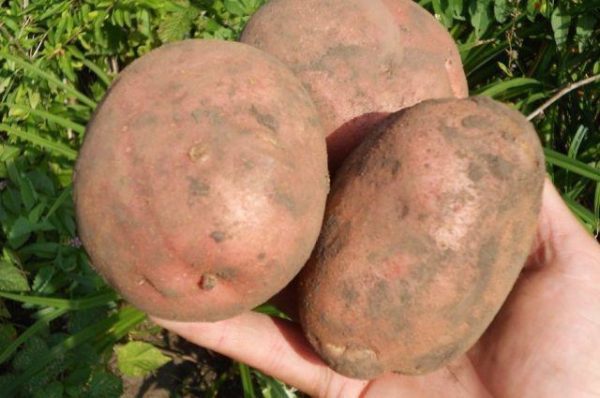 You may be interested in:
You may be interested in:When growing potatoes, summer residents have to face various problems, including - to protect plantings from pest invasions. Knowing the methods of control, effective chemical protection agents and folk remedies, and carrying out prophylaxis will help to save crops and prevent massive insect infestations.

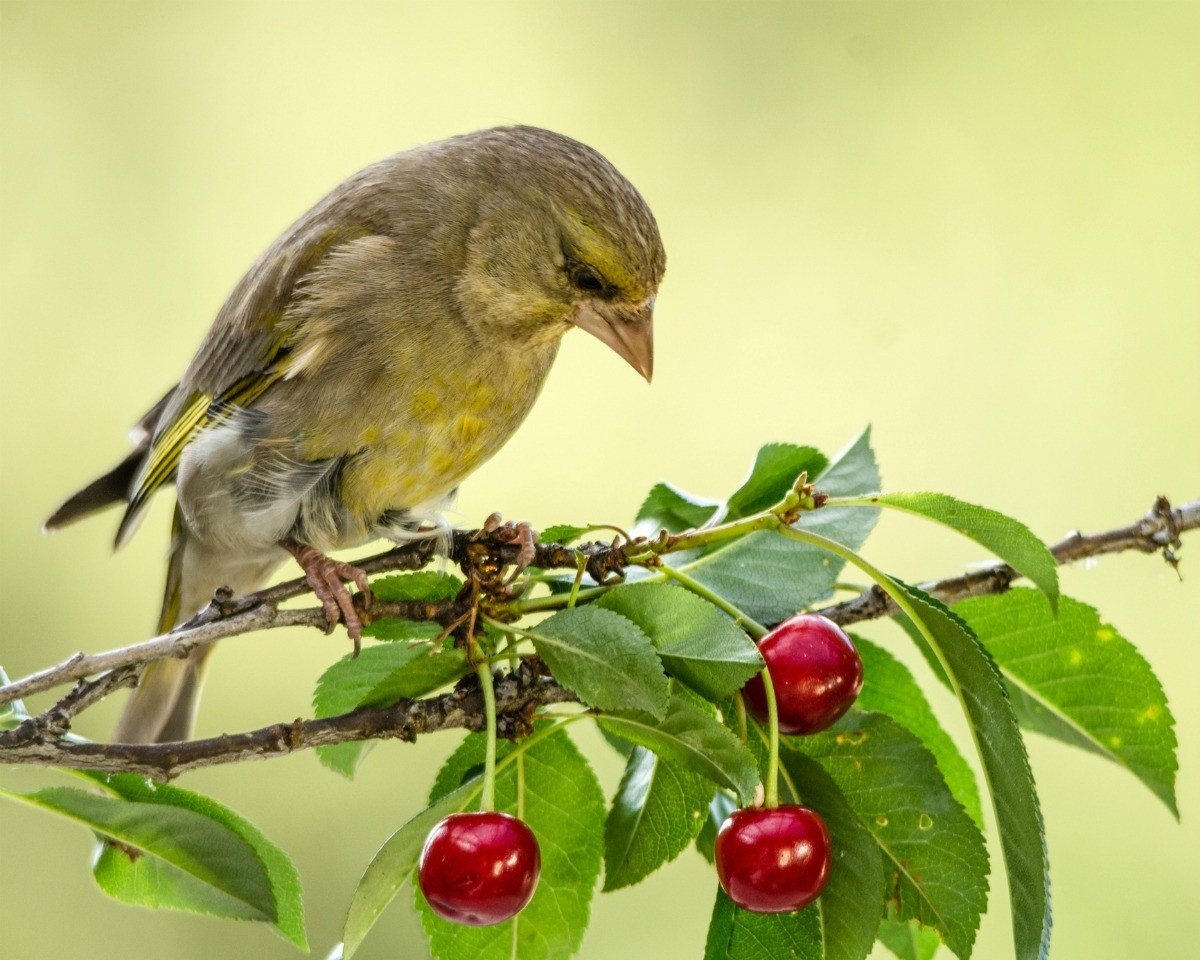
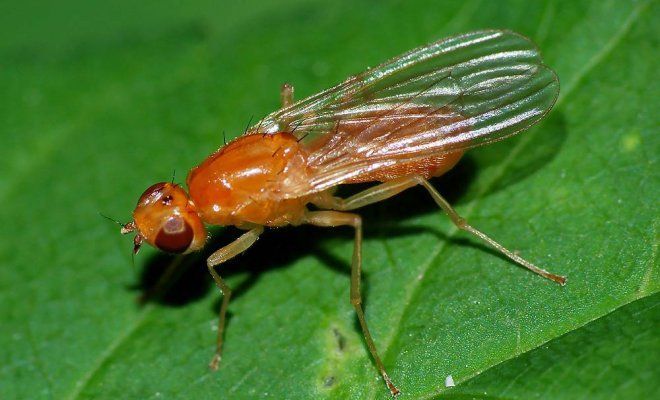
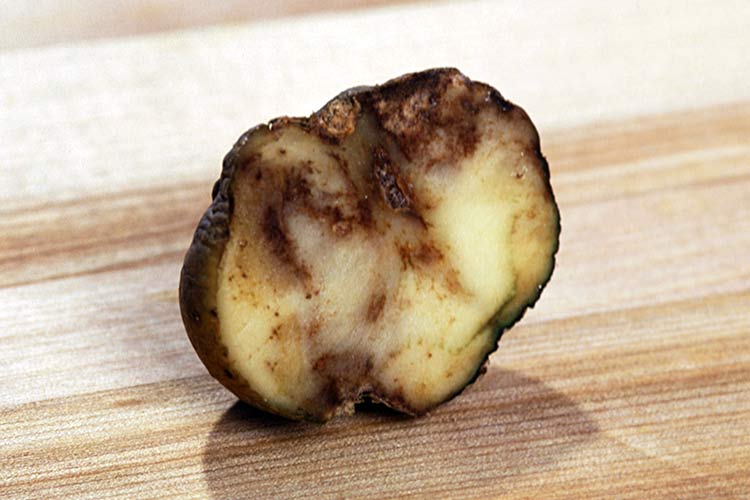
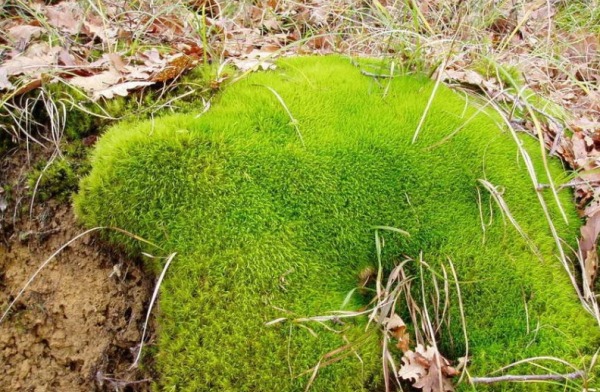 Where does moss come from in the garden and is it necessary to get rid of it?
Where does moss come from in the garden and is it necessary to get rid of it?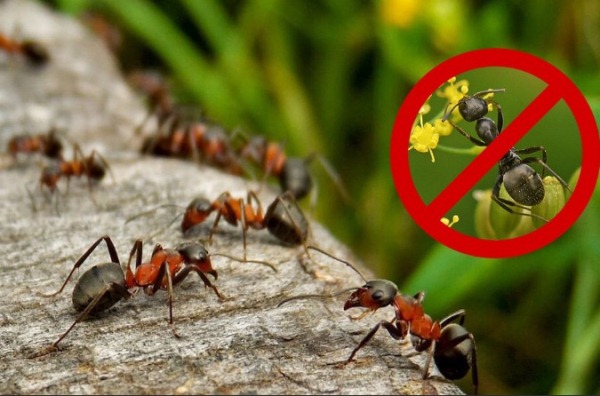 The most effective ways to deal with ants in the area
The most effective ways to deal with ants in the area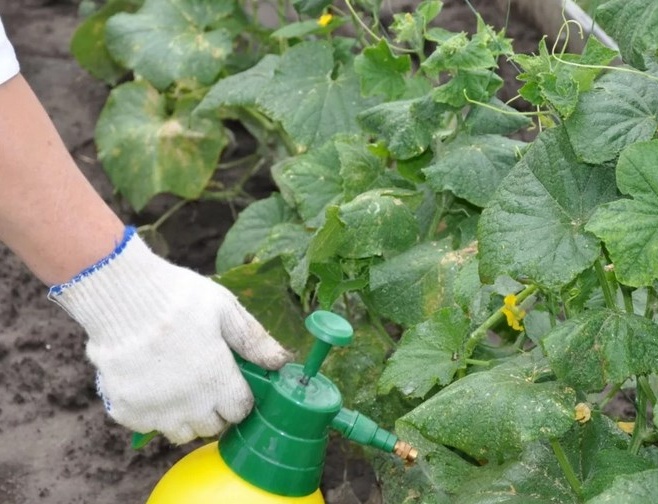 Cockchafer and Bear: An Easy Way to Save Plant Roots
Cockchafer and Bear: An Easy Way to Save Plant Roots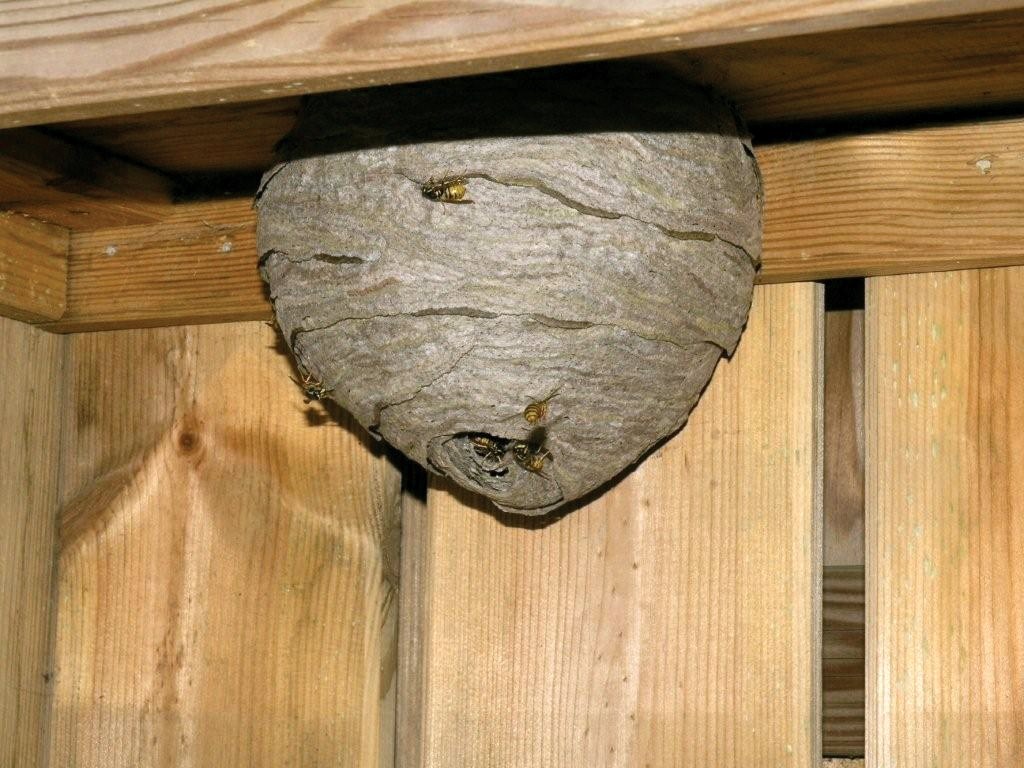 Get rid of the aspen nest quickly and safely.
Get rid of the aspen nest quickly and safely.